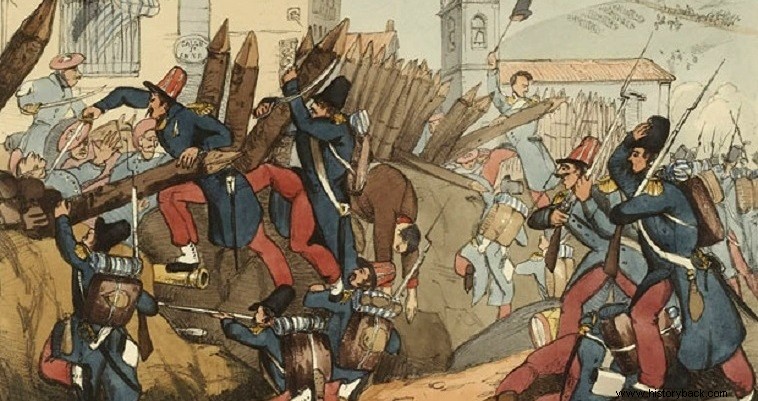
The Foreign Legion was formed by surplus mercenaries of the French throne and the scum of European society. He was sent to fight in North Africa, where he first came face to face with the fanatical Muslim emirs. But he was soon ordered to join a new, this time civil, war in hot Spain, defending French interests in one of the fiercest conflicts ever fought on the old continent, which became known as the First Carlist War.
On June 28, 1835 the Legion was granted to the Spanish Army by royal decree. A new decree the next day declared that the Legion was no longer a part of the French Army, but of the Spanish. In this way, quite cynical is the truth, France fulfilled its alliance obligations towards the Spanish and French blood was not shed and no one could accuse her of being involved in the Spanish civil war. The commander of the Legion, colonel Joseph Bernay, on August 17, 1835 landed with his men in Tarragona.
On March 24, 1836 the Legion would fight its first major battle on Spanish soil. That morning the 4th Battalion of the Legion was ordered to occupy the heights beyond Thumbiri to secure the safe movement of troops through the valley. The battalion was marching in the middle of a heavy snowstorm, which significantly reduced visibility. Suddenly the vanguard company was attacked by Carlist horsemen. Surprised, the legionnaires momentarily staggered.
But the courage of the Swiss Sergeant Berset saved the company. The sergeant, despite the fact that he had already received 20 wounds, managed to regroup his men and repel the attack. Nevertheless the Carlists came back, in great force, now threatening the whole of the 4th Battalion. Bernay, however, was on the alert and immediately ordered the 5th Battalion to attack the Carlists. This time it was the rebels who were surprised and fled, leaving behind 170 dead and 30 prisoners. The destruction of the Carlists would have been complete if the Spanish divisions which had been disposed of as the bodyguard of the Legion, had dared to engage.
The Legion, for its part, had 40 dead and 32 wounded. The large number of dead of both factions is justified by the fact that prisoners are not usually captured. In fact, Bernay, inspecting the battlefield, saw the bodies of five legionnaires so abused, that he could not stand it and ordered the execution of the 30 Carlist prisoners, which raised a storm of protests in France. But in Spain, horror was a tradition. Thus in an operation in April 1836 legionnaires suddenly attacked a Carlist camp. There they found two of their colleagues with their lips cut, their cheeks torn with a knife, their eyes gouged out and the skin of their skull scraped off!
"Nevertheless, these poor people were still alive," Barney reported in Paris, which, however, pressed for "humane" treatment of the prisoners. On April 25, 800 legionnaires, with four cannons, were attacked by 3,500 Carlists. The battle lasted all day and finally the legionnaires, led by Bernay, retreated leaving behind the 20 dead, but taking their 70 wounded with them. The Carlists had 80 dead and 200 wounded.
